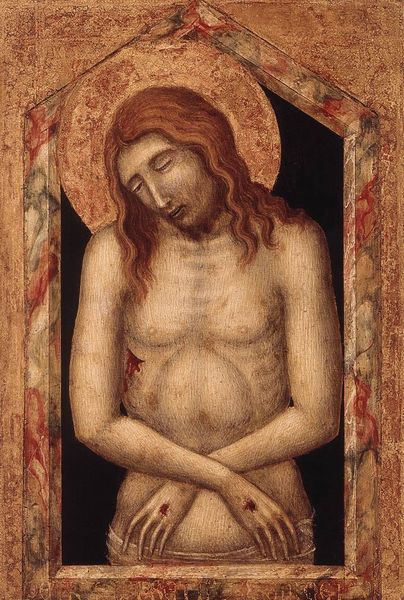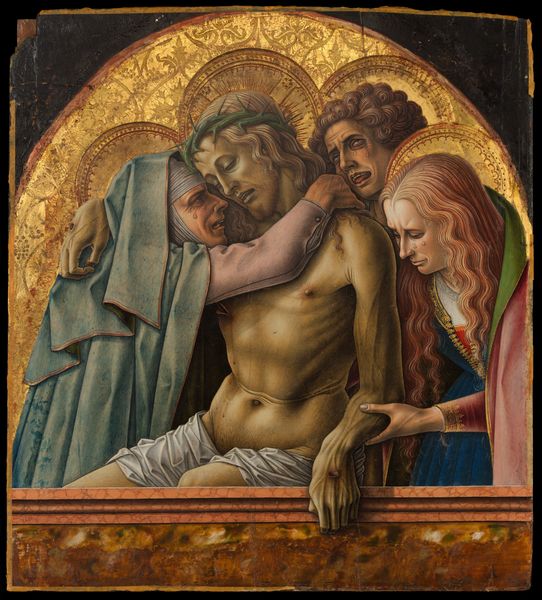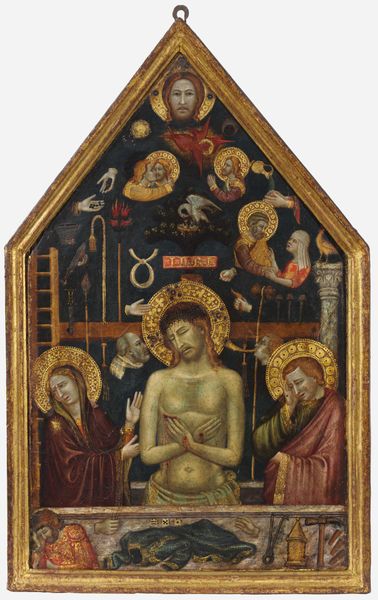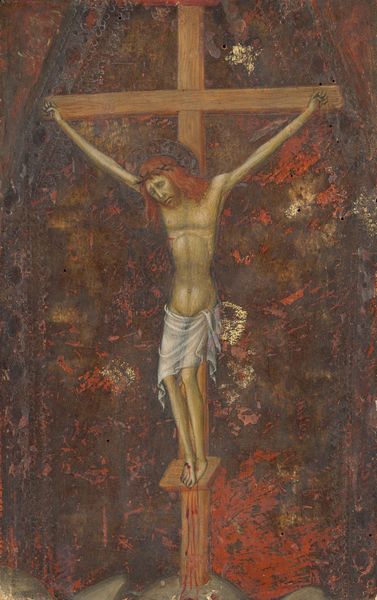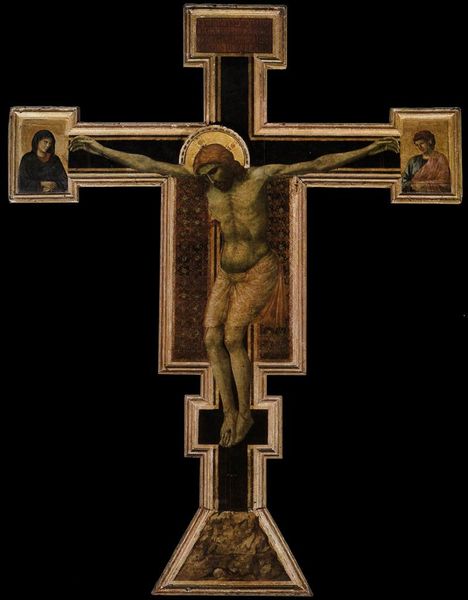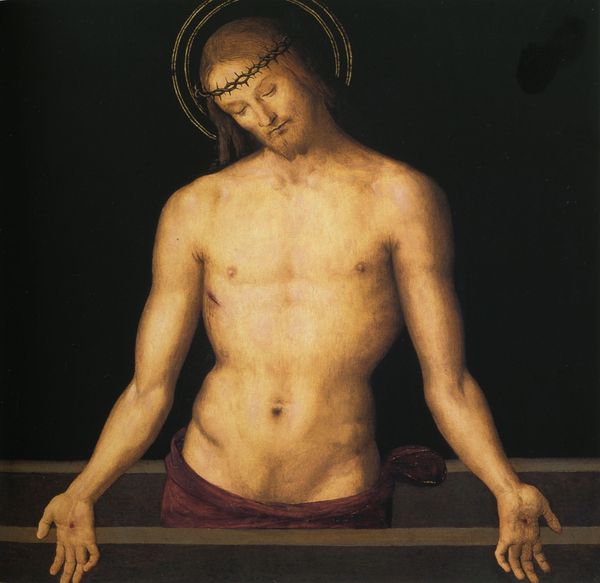
tempera, painting, oil-paint
#
portrait
#
tempera
#
painting
#
oil-paint
#
sculpture
#
figuration
#
oil painting
#
history-painting
#
italian-renaissance
#
early-renaissance
#
statue
Dimensions: Overall, with engaged frame, 21 3/4 x 15 3/4 in. (54.9 x 38.7 cm); painted surface 18 1/2 x 12 1/4 in. (47 x 31.1 cm)
Copyright: Public Domain
Curator: Here we have "The Man of Sorrows" by Michele Giambono, dating from 1425 to 1435. It is oil and tempera on wood. Editor: My initial response is one of intense sorrow, naturally, given the title, but also a real sense of the physicality of suffering. You see it rendered so viscerally. Curator: It’s interesting how Giambono presents Christ. "The Man of Sorrows" as an image had a specific role in religious devotion, particularly emphasizing Christ’s suffering as a direct result of humanity's sins. It invites empathy. Editor: I am curious about Giambono’s choices here. The medium itself - that blend of tempera and oil paints - suggests a careful, layered process, building up textures, but also impacting color, right? That pallid, almost translucent flesh. Curator: Absolutely. Giambono, working in Venice during the early Renaissance, inherited a tradition steeped in Byzantine art. Consider the heavy use of gold leaf in the halo – a symbolic marker of divinity, very much still present in this era. Yet, the emotional realism marks a departure from earlier Byzantine icons. The influence of the mendicant orders cannot be overstated either; the Franciscans, for instance, preached poverty and suffering. Editor: This smaller figure in the painting, is this Saint Francis then? He’s placed in shadow on the left. Note how the composition forces a vertical reading; a clear understanding of body position in painting is well communicated in a shallow stage. The materiality communicates grief with shocking effect for a presumed renaissance sculpture. Curator: It does. The framing narrative becomes important: where does it fit into Venetian devotional practices? How did its materiality inform viewers' understanding of this episode? Was it used privately? Editor: This sort of work is particularly compelling as it speaks to both incredible skill, and intense symbolic power with raw materials. Curator: It's fascinating how these artworks served both a deeply personal devotional purpose, and also reinforced broader social and religious doctrines of the time. Editor: Agreed, considering process alongside the devotional intent enriches the work tremendously for me.
Comments
No comments
Be the first to comment and join the conversation on the ultimate creative platform.
